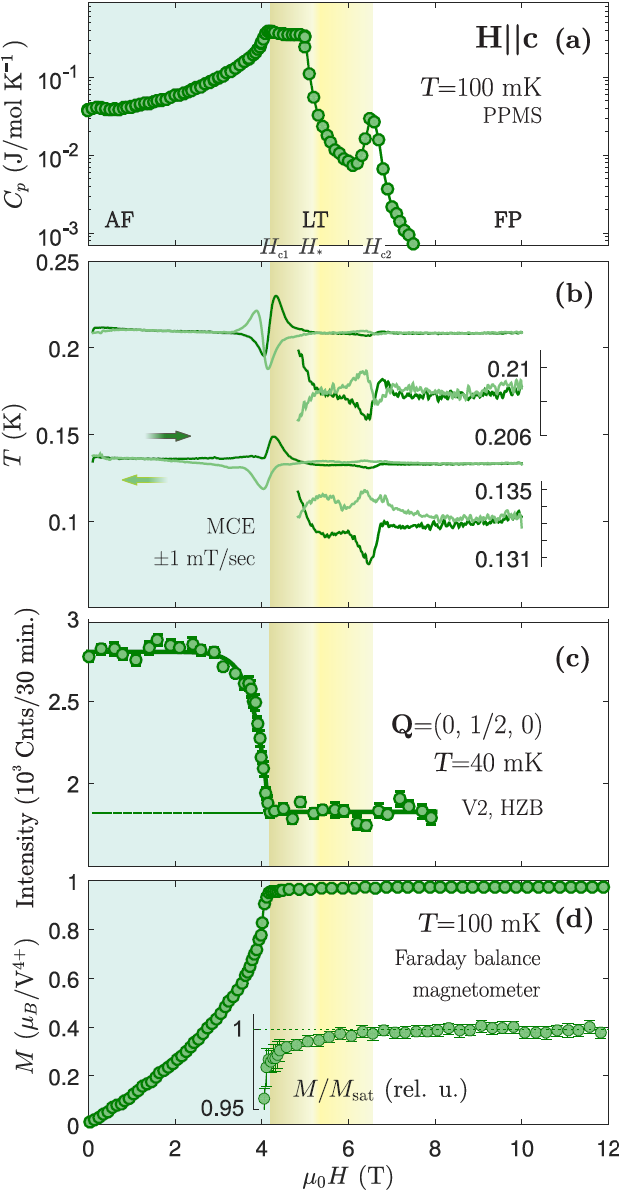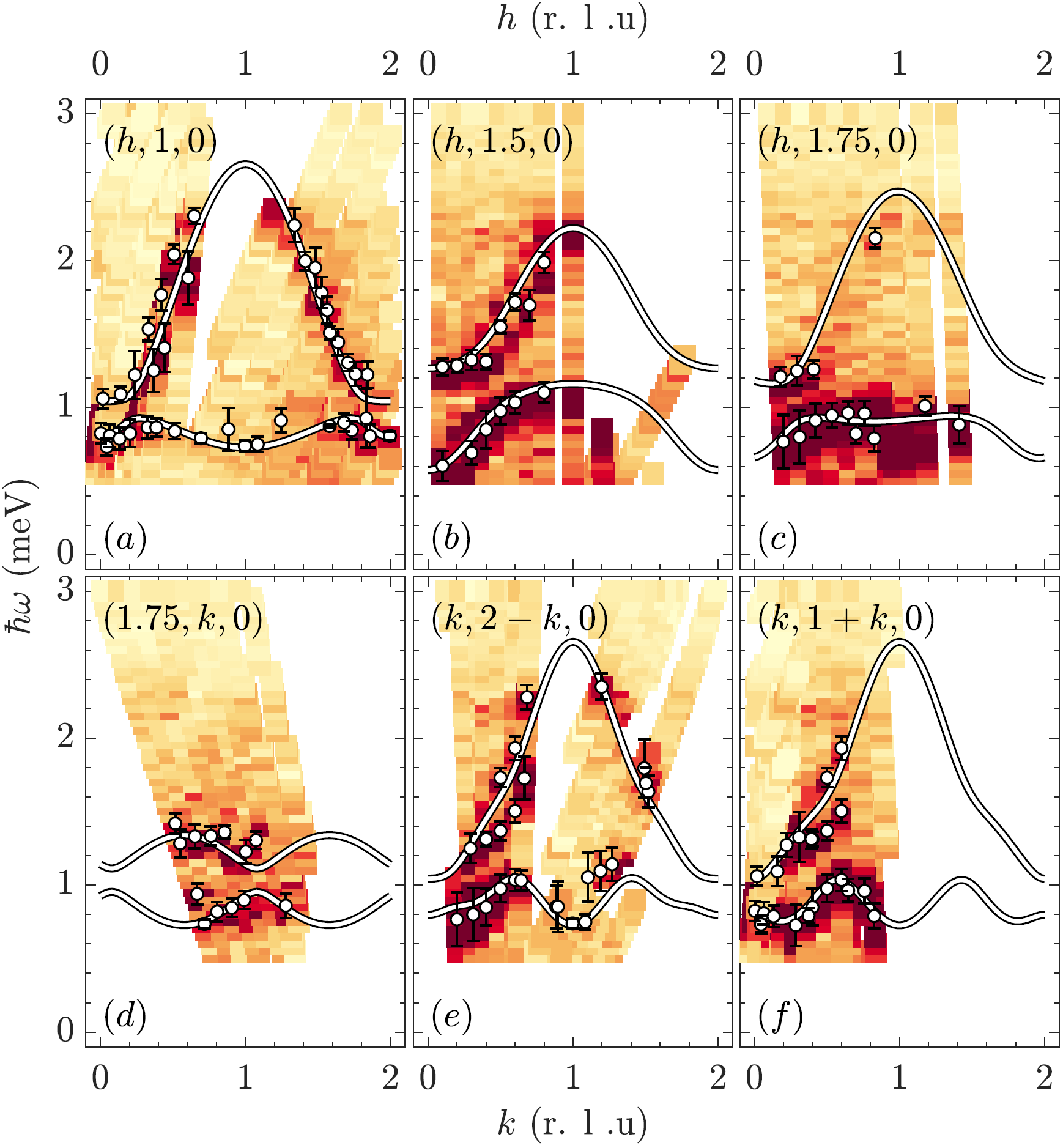Spin nematics and friends

The standard paradigm for polarization of Heisenberg antiferromagnets by an external magnetic field is that of single magnon Bose Einstein condensation. It has been predicted that this, essentially semiclassical, picture breaks down for sufficiently frustrated spin system and exotic quantum phases are stabilized below saturation. Several of these can be viewed as condensates of multi-magnon bound states. The most interesting one is the spin nematic: spins fluctuate (there is no conventional magnetic order), but these fluctuations spontaneously become anisotropic (as shown above).
We are investigating these concepts in layered vanadyl phosphates ABVO(PO4)2 (A,B = Pb, Sr, Zn, Ba, Cd). Having synthesized unique single crystals, we have looked at several species. They all show very interesting behavior with exotic pre-saturation quantum phases. And yet, they all seem to be very different due to subtle but significant variations in the crystal structure.
![Enlarged view: Top: Spin excitation spectrum in Pb<sub>2</sub>VO(PO<sub>4</sub>)<sub>2</sub>. Neutron scattering data vs. model simulation [1]. Bottom: Magnetic field dependence of a magnetic Bragg peak measured in up to a record-setting 24 Tesla [2].](/highlights/spin-nematics-and-presaturation-phases0/_jcr_content/par/textimage_124545898/image.imageformat.text50percent.1715785946.png)
Our inelastic neutron experiments on the compound Pb2VO(PO4)2 [1] has revealed that the Heisenberg Hamiltonian is more complicated and less frustrated than initially thought. It has therefore been rather surprising that high field torque, NMR and neutron diffraction experiments show that this compound hosts a pre-saturated phase before being fully polarized by an external magnetic field [2]. That new phase seems to be a complex magnetic structure, presumably an incommensurate spin density wave.
[1] S. Bettler, F. Landolt, Ö. M. Aksoy, Z. Yan, S. Gvasaliya, Y. Qiu, E. Ressouche, K. Beauvois, S. Raymond, A. N. Ponomaryov, S. A. Zvyagin, and A. Zheludev, external page Phys. Rev. B, 99,184437 (2019).
[2] F. Landolt, S. Bettler, Z. Yan, S. Gvasaliya, A. Zheludev, S. Mishra, I. Sheikin, S. Krämer, M. Horvatić, A. Gazizulina, and O. Prokhnenko, external page arXiv:2006.04592 (2020).

The material BaCdVO(PO4)2 [3] has a much stronger degree of frustration and a very wide pre-saturation phase. By using a combination (left) of experimental techniques [4] we came to the conclusion that this phase is almost certainly a quantum spin nematic. At the same time, we discovered that the crystal structure and therefore also the magnetic interactions are much more complicated than was previously thought, due to a structural phase transition at 250 K. To determine the effective spin Hamiltonian we performed a detailed study of the spin excitation spectrum (as shown below).
[3] K. Yu. Povarov, V. K. Bhartiya, Z. Yan, A. Zheludev, external page Phys. Rev. B 99 024413 (2019)
[4] V. K. Bhartiya, K. Yu. Povarov, D. Blosser, S. Bettler, Z. Yan, S. Gvasaliya, S. Raymond, E. Ressouche, K. Beauvvois, J. Xu, F.Yokaichiya, and A. Zheludev, external page Phys. Rev. Research 1, 033078 (2019).
